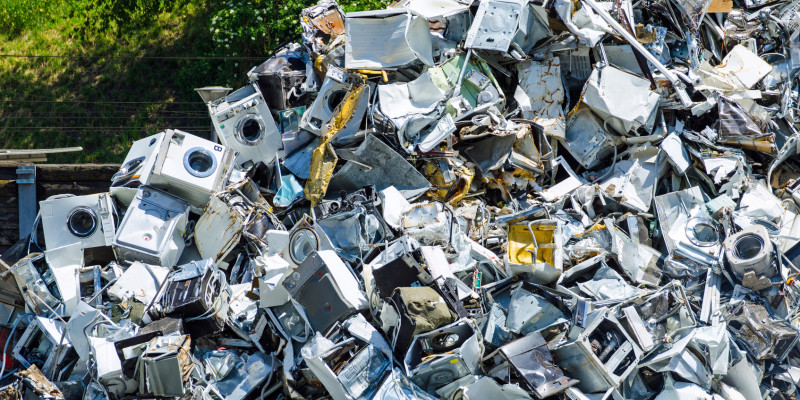The EU requires that the equivalent of 45 percent of the electrical and electronic equipment (EEE) placed on the market during the three previous years be recovered. 2,081,223 tonnes of EEE were put into circulation in 2017. Compared to the previous year, 54,693 more tonnes of WEEE were collected and recovered (+7 percent). Therefore, the collection rate for 2017 adds up to 45.08 percent. The highest collection rate stands at over 70 percent for small household appliances such as hair dryers, toasters, and consumer electronics including televisions and radios. The collection rate for large household appliances was only 42 percent in 2017. The difference of nearly half a million tonnes between the amount of EEE on the market and WEEE collected is particularly great.
As of 2019, 65 percent of the EEE placed on the market must be collected, which will make it necessary to increase the amount collected sharply. The German Federal Ministry for Environment (BMU), with the support of UBA, is working to draft an amendment to the Electrical and Electronic Equipment Act (ElektroG). The legislation is to include measures which ensure a higher collection rate of WEEE thanks to a denser network of collection points. It also requires better information for consumers and the greater involvement of all stakeholders.
WEEE from private households can be taken to municipal collection points (e.g. collection stations, depot containers for small EEE, hazardous waste collection mobiles). Several municipalities also provide a free WEEE collection service together with bulky waste The details of WEEE collection vary from municipality to municipality and can usually be looked up online or clarified by placing a phone call with the local authorities. Under certain conditions, retail and mail order businesses with a sales floor/warehouse space of at least 400 square metres will take back WEEE free of charge. This applies in particular to larger consumer electronics and DIY chains. The waste equipment need not have been purchased from the vendor taking it back.
UBA is issuing a warning not to return items to commercial collectors, for example scrap collection businesses that advertise such services, but who are not authorised to collect and recover WEEE. These businesses might possibly dispose of the equipment, either in Germany or abroad, in an environmentally unfriendly way.
Used batteries which have not been removed from WEEE are another current disposal problem. Lithium batteries in particular – either still in a device or improperly discarded with other residual or packaging waste – can self-ignite and cause a fire. Consumers are advised to take readily removable batteries out of the equipment and take them to spent battery collection bins.
 Click to enlarge
Click to enlarge
